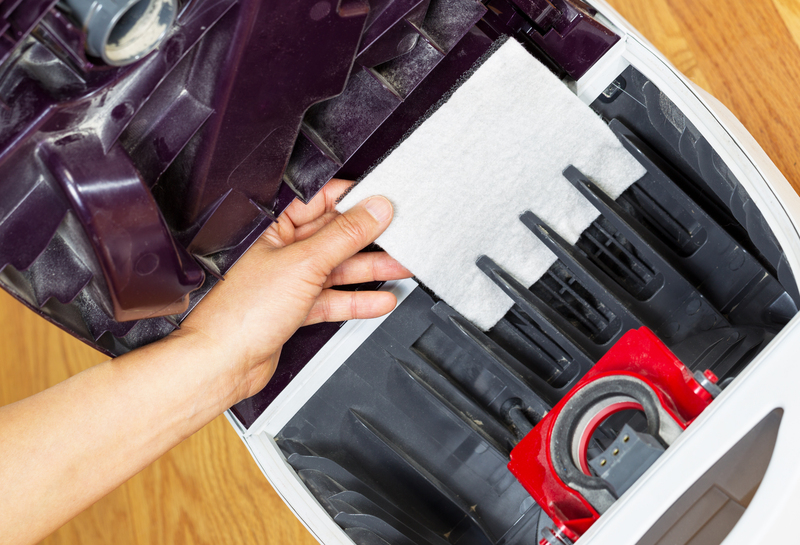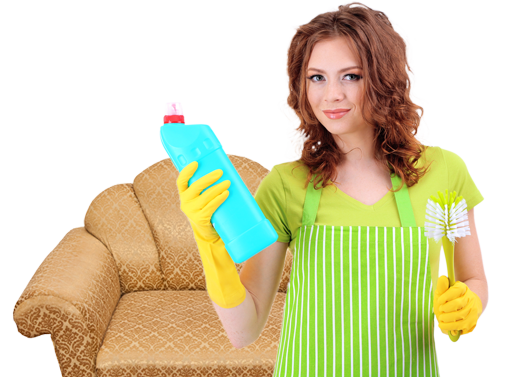Enhancing Indoor Air Quality for Health and Productivity
Posted on 20/06/2025
Enhancing Indoor Air Quality for Health and Productivity
In today's fast-paced and urbanized world, most people spend nearly 90% of their time indoors--at home, at work, or in other enclosed environments. This fact highlights the critical importance of indoor air quality (IAQ). The condition of the air inside buildings is not just about comfort; it greatly influences our health, well-being, and productivity. Poor IAQ can lead to a myriad of health issues, lower cognitive function, and decreased work efficiency. In this comprehensive guide, we explore how to improve indoor air quality, the latest advancements in air purification, and effective ways to ensure a healthier, more productive indoor environment.

Why Indoor Air Quality Matters
Indoor air quality is often overlooked, but inadequate attention to it can have lasting consequences. Poor IAQ can be caused by pollutants such as dust, pollen, mold, volatile organic compounds (VOCs), pet dander, and chemicals released from cleaning supplies and furniture. According to the Environmental Protection Agency (EPA), indoor air can be 2 to 5 times more polluted than outdoor air.
Health Impacts of Poor Indoor Air Quality
- Short-term effects: Eye, nose, and throat irritation, headaches, dizziness, and fatigue.
- Long-term effects: Respiratory diseases, heart disease, cancer, and worsening of asthma and allergies.
- Mental impacts: Decreased attention span, impaired memory, and lower cognitive performance.
Enhancing air quality indoors isn't just a preventative measure; it's a proactive approach to creating safer, healthier, and more productive spaces for living and working.
Sources of Indoor Air Pollution
To effectively enhance air quality at home or work, it's essential to understand common sources of indoor air pollution:
- Volatile Organic Compounds (VOCs): Emitted from paints, lacquers, cleaning supplies, air fresheners, and building materials.
- Mold and Mildew: Thrive in damp and poorly ventilated areas, releasing spores that can trigger allergies and respiratory issues.
- Particulate Matter (PM): Microscopic solid or liquid particles from cooking, burning candles, smoking, or outdoor air intrusion.
- Household Allergens: Dust mites, pet dander, and cockroach debris.
- Outdoor Pollutants: Contaminants like pollen and vehicle exhaust that infiltrate indoor environments.
Tackling these pollutants is the foundation of any effective indoor air quality enhancement strategy.
Strategies to Enhance Indoor Air Quality
Improving IAQ requires a combination of targeted interventions, ongoing monitoring, and smart choices in building and lifestyle design. Let's break down actionable steps:
1. Improve Ventilation
- Open windows and doors: Natural ventilation dilutes indoor pollutants with fresh, outdoor air.
- Use exhaust fans: Especially in kitchens and bathrooms to remove moisture, odors, and contaminants.
- Mechanical ventilation systems: Such as energy recovery ventilators (ERVs) and heat recovery ventilators (HRVs) that efficiently bring fresh air in while expelling stale indoor air.
Tip: When outdoor air quality is poor, limit natural ventilation and rely more on filtration systems.
2. Control Sources of Pollution
- Regularly clean and maintain HVAC systems to prevent mold and dust buildup.
- Choose low-VOC paints, adhesives, and building materials.
- Avoid smoking indoors and enforce no-smoking policies.
- Store chemicals and toxic substances in sealed containers, away from common living or working areas.
- Wash bedding and vacuum carpets frequently using HEPA-filtered vacuums.
3. Monitor Humidity Levels
- Maintain indoor relative humidity between 30% and 50% to inhibit mold, dust mite, and bacterial growth.
- Use dehumidifiers in damp spaces, especially basements.
- Repair leaks and address condensation promptly.
4. Use Air Purification Technologies
- HEPA filters: Trap 99.97% of airborne particles larger than 0.3 microns, including dust, pollen, and some bacteria.
- Activated carbon filters: Absorb gases, odors, and VOCs.
- UV-C light devices: Help kill bacteria, viruses, and mold spores.
- Smart air purifiers: Combine various filtration technologies and can be scheduled or remotely controlled for optimal air quality.
Ensure air purifiers are appropriately sized for the space and have certified ratings for effectiveness.
5. Incorporate Indoor Plants
- Plants such as peace lilies, snake plants, and spider plants are known to absorb certain toxins and help regulate humidity.
- Choose species suitable for your home or office and avoid those that may trigger allergies.
Note: While plants can contribute positively, they should not be solely relied on as the primary method for cleaning indoor air.
6. Implement Regular Cleaning Protocols
- Establish routines for dusting, mopping, and cleaning to prevent accumulation of allergens and contaminants.
- Use eco-friendly, non-toxic cleaning products to reduce VOC emissions.
- Don't forget hidden spots: air ducts, blinds, and upholstery can harbor dust and pollutants.
7. Continuous IAQ Monitoring
- Install indoor air quality monitors to measure pollutants like PM2.5, CO2, temperature, and humidity.
- Use the data to adjust ventilation, purification, and cleaning practices as needed.
Enhancing Indoor Environmental Quality in Workplaces
Optimizing indoor air quality in offices and commercial environments not only safeguards health, but also drives productivity and job satisfaction. Numerous studies show that cleaner air results in fewer sick days, better concentration, and higher work output.
Benefits for Health and Performance
- Reduced absenteeism from work-related illness and respiratory infections.
- Improved concentration and cognitive performance.
- Higher morale and job satisfaction.
Best Practices for Businesses to Enhance IAQ
- Assess building materials: Use certified low-emitting products and ensure proper curing of any new installations.
- Evaluate office layout: Space workstations to minimize cross-contamination and maximize airflow.
- Regular professional cleaning: Schedule frequent maintenance of HVAC systems and deep cleaning of office spaces.
- Employee education: Train staff about IAQ best practices, such as reporting leaks or avoiding strong-scented products.
- Flexible ventilation systems: Invest in advanced HVAC solutions that allow for high-grade filtration and real-time air monitoring.
The Latest Innovations in Air Quality Enhancement
Technology plays an ever-increasing role in the evolution of healthier indoor spaces. Here are some of the most promising advancements:
- Smart IAQ sensors: Devices that monitor pollutants and automatically adjust ventilation or purification systems.
- Bipolar ionization: Emerging HVAC technology that neutralizes airborne pathogens and breaks down VOCs.
- Photoelectrochemical oxidation: Advanced systems that combine UV light and catalysts to remove molecular pollutants.
- Integrative building design: Green building standards, like LEED and WELL, emphasize IAQ through natural ventilation, sustainable materials, and ongoing air quality monitoring.
Residential Strategies: Enhancing Home Air Quality
For residents, fostering healthier indoor environments improves comfort, sleep quality, and overall well-being.
Key Tips for Homeowners
- Eliminate sources: Transition to natural or low-chemical home products, minimize use of air fresheners, and discard moldy items promptly.
- Upgrade filters: Use high-quality air filters in central heating and cooling systems, replacing them every 1-3 months.
- Regular inspections: Check for leaks, pest infestations, and moisture issues, particularly in basements and attics.
- Safe cooking practices: Always turn on exhaust fans while cooking, and limit frying or grilling indoors.
Measuring Indoor Air Quality: What to Look For
A variety of indicators help assess the effectiveness of your air quality improvement efforts:
- Particulate Matter (PM2.5 and PM10): Fine and coarse dust particles harmful to lungs.
- CO2 Concentration: Levels above 1,000 ppm can suggest insufficient ventilation.
- VOCs: Monitors provide real-time measurement, signaling off-gassing from furniture or products.
- Allergen counts: Particularly relevant in homes with children or pets prone to allergies.
Regular monitoring and data-driven interventions are vital to consistently enhance indoor air quality for every season and occupancy change.

Frequently Asked Questions: Indoor Air Quality Enhancement
How often should I check my indoor air quality?
At least seasonally, or after any significant renovation. For sensitive individuals, or in areas with high outdoor pollution, consider continuous monitoring.
What are the most effective air-purifying plants?
While many houseplants can absorb specific toxins, popular favorites include snake plant, spider plant, peace lily, and golden pothos. Ensure safe placement away from pets and small children, as some may be toxic if ingested.
Can air purifiers replace ventilation?
No. Air purification and ventilation serve different but complementary functions. Purifiers remove airborne contaminants, while ventilation brings in fresh air and reduces indoor pollutant buildup. Both are necessary for optimal indoor environments.
Is indoor air always better than outdoor air?
Not necessarily. Indoor air can sometimes be more polluted due to poor ventilation or chemical buildup. Always assess both sources and consider enhanced filtration and regular cleaning.
Conclusion: Creating Healthier Indoor Spaces for Living and Working
Enhancing indoor air quality is a multifaceted challenge, but the rewards--in health, happiness, and productivity--are substantial. By identifying pollutant sources, using advanced cleaning and filtration methods, monitoring IAQ, and adopting smart design and maintenance habits, you can cultivate a safe, healthy, and invigorating indoor environment. Whether at home or in the workplace, investing in indoor air quality means investing in your well-being and performance.
Take proactive steps today to ensure the air you breathe indoors supports your health and helps you excel in every aspect of life.





